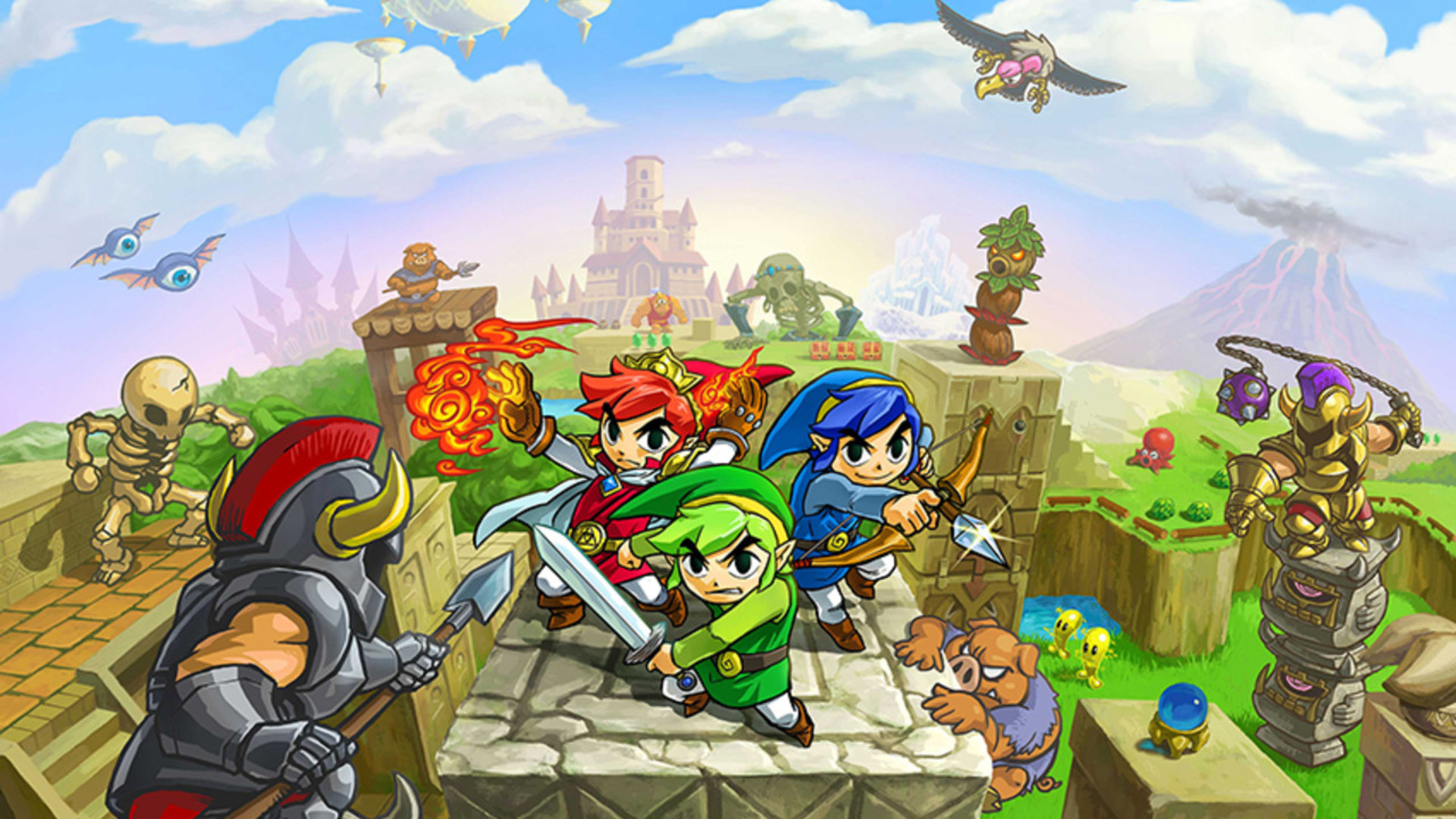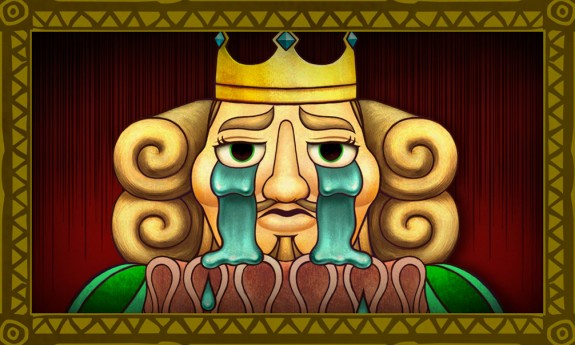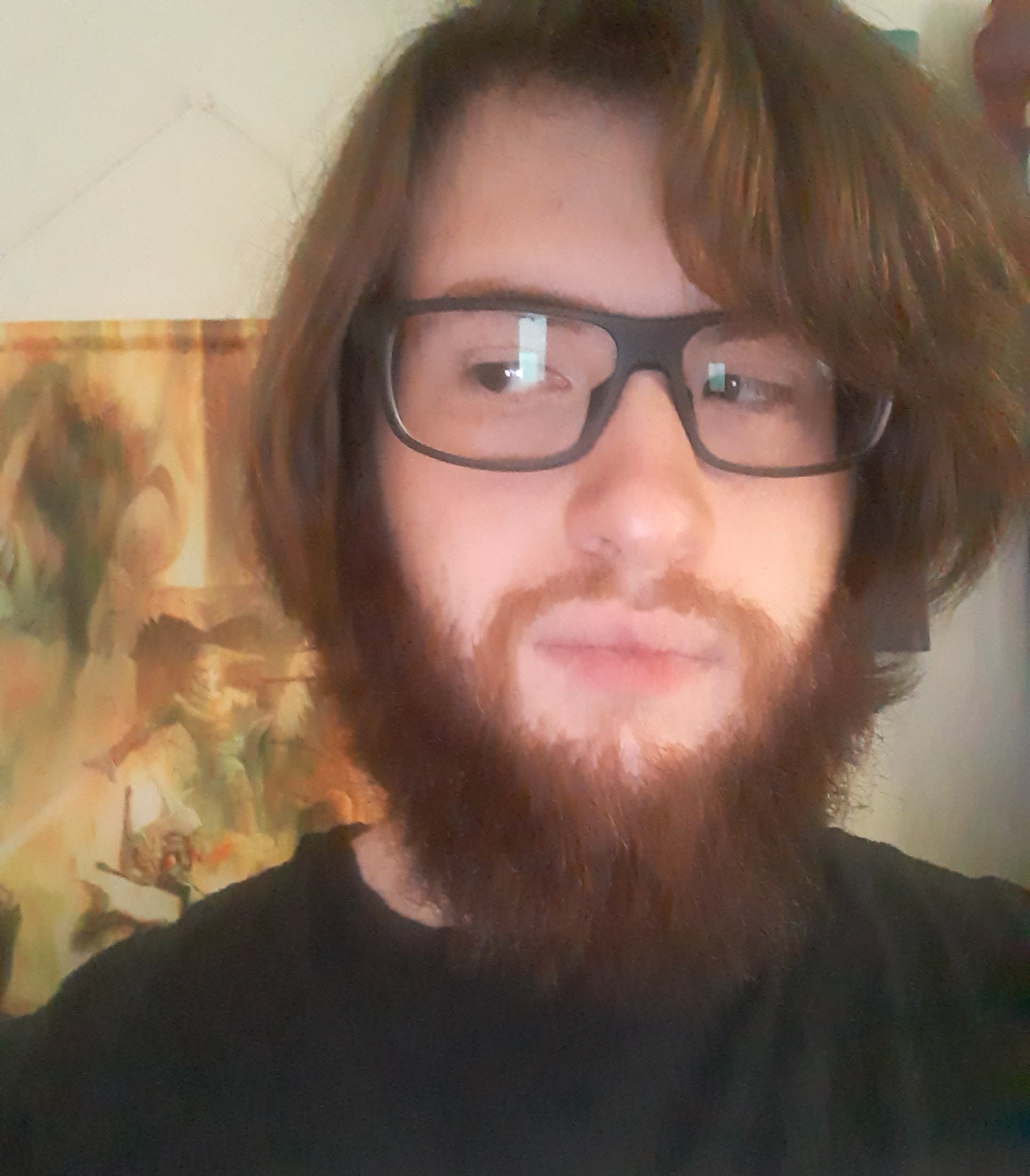Hytopian Fables: Solving Tri Force Heroes Questionable Canon Status by Suggesting the Whole Thing was an In-Universe Fairytale
Posted on August 15 2019 by Charles Xavier

The Legend of Zelda series is unique for making games that are different from its norm. While they primarily take place in Hyrule, some games have changed the setting up, tossing Link into peregrine lands such as Lorule, Holodrum, and Labrynna, among others. Usually, those games set in foreign lands still tie into the main Zelda lore somehow. Tri Force Heroes is the only canon game that doesn’t.
Here’s my issue with Tri Force Heroes, there is absolutely nothing in the game firmly tying it to any other games in the series. It’s certainly hard to make connections between games when the exact location of the setting, and the identity of the protagonist are in question, right? Well, this game does exactly that, it takes place in the land of Hytopia, and Hyrule is never mentioned; plus, the game leaves it unspecified whether the Hero in Tri Force Heroes was in any previous games. Furthermore, there is no mentioning of any other staple elements of Zelda lore in this game, aside from the Triforce. Nevertheless, the Triforce is there only in namesake and depiction, it plays no important role in the plot. Considering only the in-game evidence, whether the game is actually canon at all is nebulous.
So how is it even possible for this game to be a canon Zelda entry? In true Nintendo fashion, as an afterthought. Tri Force Heroes is canon only because its director Hiromasa Shikata deemed it so in an interview with Gamespot, stating that the hero is the same one from A Link Between Worlds:
“Initially, the story starts with the king recruiting hero candidates, and that’s where Link steps in. But there’s a part of me that doesn’t want people to come into the game thinking, “Is he not a hero then? Is he just a candidate?” I want to reassure people that this Link is the hero that came from the A Link Between Worlds world. It’s a little unusual for a Zelda game, but it’s the same hero.” – Hiromasa Shikata
I always prefer for something this relevant to the story to be implemented into the game itself. It also doesn’t help that Link’s design is different in Tri Force Heroes compared to A Link Between Worlds, so if I didn’t know about that Gamespot interview there would be nothing leading me to think the hero in Tri Force Heroes was also in A Link Between Worlds. At first, I chose to view Tri Force Heroes as a non-canon game, and I was content with that because of the lack of ties to other games in it. But then that Gamespot interview surfaced, ruining everything. Suddenly this game is canon and has a set placement on the Official Zelda Timeline, leaving me with a nightmare situation that I couldn’t easily sidestep!
As a Zelda Theorist, I’ve accepted the Official Zelda Timeline, so when I heard Tri Force Heroes was added to it, I was very disappointed. It was like they added it just for the hell of it, not for any meaningful reason. I disliked Tri Force Heroes as a canon game for a while, but I was stuck with it as long as I planned to adhere to the Official Zelda Timeline. So, I did what a Zelda Theorist is supposed to do; I tried finding a way to make this game work with it’s given timeline placement. What I came up with was a really cool possibility: what if the game is merely a storybook being played out? Afterall, the game begins with a book being opened and ends with the book being closed.
Similarities To Fictional Books

To prove the idea to myself, I began searching for any comparisons to fictional books in reality. This led me into analyzing the plot of Tri Force Heroes (which is honestly something I never imagined I’d be doing with my time). The gist of it is, three heroes gather to save Hytopia’s Princess, Styla, from a fate of being stuck in a fashionless cursed outfit. The conflict of this story isn’t really a life or death matter, and Hytopia isn’t even in any real danger. The notion that the rest of the citizens cannot maintain fashion stems from paranoia. Thus, the driving factor for Link’s quest lacks any severity in comparison to the plot of other Zelda games, where the stakes are usually much higher (save Hyrule or everyone will die). This is a very notable difference.
With that in mind, I feel like Tri Force Heroes is easily comparable to the plot of some fictional stories, like Alice in Wonderland, or Gulliver’s Travels. Such stories are humorous and easy to disregard. An in-game comical example is the King being depicted crying a literal flood of tears; it’s exaggerated beyond belief. When I first saw the image above surface, my initial reaction was to laugh at it. Given the context of the game’s plot, it only makes the picture even funnier – it can’t be taken seriously. Although, often in fiction, a light-hearted story does have some kind of message that is trying to be conveyed underneath all the whimsical qualities, and Tri Force Heroes is no different.
Tri Force Heroes and its ties to French Culture and The Three Musketeers
It doesn’t require any digging to find the serious issue depicted in Tri Force Heroes. The Lady has taken away a freedom – Princess Styla no longer has the freedom to wear the clothing she wants. The fear that spreads as a result of The Lady’s actions cause the masses to be afraid of being too stylish, and surely that was intentional; targeting a person held in high esteem for a bad fate is a good scare tactic. In a land where being stylish is a basis of society, being deprived of that freedom probably would be immensely annoying (and drab)! Therefore, the Tri Force Heroes are actually fighting for a meaningful cause – to restore liberty to an oppressed people. This is relevant because the story in reality that Tri Force Heroes seems to have been in part inspired by is Les Trois Mousquetaires (The Three Musketeers) by Alexandres Dumas.
 While it’s never been confirmed, it is obvious that Tri Force Heroes took some inspiration from The Three Musketeers. I always knew the game’s title in Japanese translates in English to “The Legend of Zelda: The Three Triforce Musketeers“, but for whatever reason I never considered that there could be any firm connection besides the obvious similarity in the titles. Then it dawned on me, while The Three Musketeers is primarily an action/adventure novel, it does deal with political issues, frequently touching on social injustices of the French Ancien Régime (Old Regime). That aspect of the novel is what Tri Force Heroes draws a lot from. So this connection makes a lot of sense, especially considering overall the game is inspired by French culture.
While it’s never been confirmed, it is obvious that Tri Force Heroes took some inspiration from The Three Musketeers. I always knew the game’s title in Japanese translates in English to “The Legend of Zelda: The Three Triforce Musketeers“, but for whatever reason I never considered that there could be any firm connection besides the obvious similarity in the titles. Then it dawned on me, while The Three Musketeers is primarily an action/adventure novel, it does deal with political issues, frequently touching on social injustices of the French Ancien Régime (Old Regime). That aspect of the novel is what Tri Force Heroes draws a lot from. So this connection makes a lot of sense, especially considering overall the game is inspired by French culture.
One of the only things I liked about the plot of Tri Force Heroes was Hytopia itself, precisely because it’s a unique land within the Zelda series that mirrors French culture in reality. The inspiration is conspicuous, from Hytopia being a land governed by fashion, to Madame Couture’s heavy French accent. At just about every corner of the game, there is some French reference you can catch. With a viable comparison to a fictional book in reality discovered, my focus then shifted to just how much of Tri Force Heroes is actually real.
The Plot of Tri Force Heroes Could Be Canon As A Storybook
Within The Legend of Zelda Encyclopedia, it has been stated that Hytopia is located to the North of Hyrule. Correspondingly, with this theory I’m considering Hytopia as a real place. I do feel like the characters and culture there make Hytopia stand out in a good way, it’d be a shame if it was a completely fictional land. Much like The Three Musketeers, there is likely some historical truth to this in-universe Novel, besides being set in a real place. Maybe three heroes did save Hytopia in the land’s past, resulting in the Legend of The Tri Force Heroes? Perhaps there was an event that occurred which took away the Hytopian’s liberty to be fashionable, but it was resolved in some way other than three heroes uniting to save the land? At some point, a Hytopian citizen decided to sit down and write a fictional story with some historical basis, and the end result was an in-universe variant of The Three Musketeers!

Interestingly, we get to learn a bit about the author because he placed himself in the story. There are glasses on the table next to the book during the ending scene of its closing, the glasses belong to Mr. Tudor, a character in the game. Mr. Tudor works in Hytopia’s Castle. Having traveled the Drablands himself in his youth, he is knowledgeable about the region and offers tips to the Hero of the game. Besides being well versed in the available literature, he is also an aspiring author. In the game, it is mentioned that Mr. Tudor had ambitions to write a book in his youth, but never got around to it. As an adult, he drew from his experiences being one of the only Hytopians who dared to explore the Drablands, and made a story out of that.
I can’t really firmly prove this, aside from the fact that the game’s intro is the book being opened and it ends with the book being closed. Yet the story definitely has been made into a book, it seems. The question is if the book is fictional, or not. It could be that the events really did happen, and Mr. Tudor committed to writing a historical account of Link’s adventures in Hytopia. Although even that notion seems odd. He didn’t travel with Link, so there is no way he could have known the exact details of Link’s adventures. In that case, some segments are embellished, others aren’t. If that isn’t the case, we’d have to assume that Mr. Tudor had an opportunity to interview Link. Overall, I’d say Occam’s Razor would win out here; we see the game taking place within the contents of a storybook, the solution that can be arrived at with the minimum amount of assumptions needed is that the book is a fictional work in-universe.
This Theory Remedies The Issues Zelda Theorists Have With Tri Force Heroes
I personally hold that Tri Force Heroes could be a fictional storybook, and there is a precedence for this in terms of Nintendo logic and storytelling. Something like this has been done before with the Paper Mario series; all the Paper Mario games are merely a storybook in the actual Super Mario Bros. universe. With the Zelda series, in particular, a kind of off-shoot game that remains canon is also not far-fetched. Alongside a game like Link’s Awakening, which is an entire game set within a dream, a game set within a storybook would not be the odd game out.
This totally feels right up Nintendo’s alley, and it’d be cool if they confirmed that Tri-Force Heroes is a storybook setting. It could add an interesting twist to add to the ever-expanding Zelda lore, while also fixing a lot of the issues that Zelda Theorists have with the game.
Look, I get it, it was a low blow that this game was added to the Official Zelda Timeline when it didn’t even add anything meaningful to the Zelda Lore. Not only that, it felt like this game could have been flexible with its Timeline placement. I really like a different take on the game that some friends of mine made, in which they posit that Tri Force Heroes could fit a lot better after Spirit Tracks on the Official Timeline. However, as of now Tri Force Heroes is firmly set on the timeline. This storybook theory adds some kind of resolution at least, making the game not as important anyway. And let’s face it, Tri Force Heroes already lacks significance as is. It’s a resolution I would be okay with, if it became true, I hope other Zelda fans would be ok with it too.
Charles is an Editor at Zelda Dungeon. He enjoys Skittles immensely. He loves playing video games, reading books, and creating art. He is a massive Lord of The Rings, Star Wars, and Marvel fan.

Charles is a Senior Editor at Zelda Dungeon. He is a Visual Development artist focused on enviroments and pitch paintings. Check out his Instagram and Twitter to see his latest artworks, a lot of which is Zelda fan art! His favorite candy is Skittles – he feels the world should know this.



